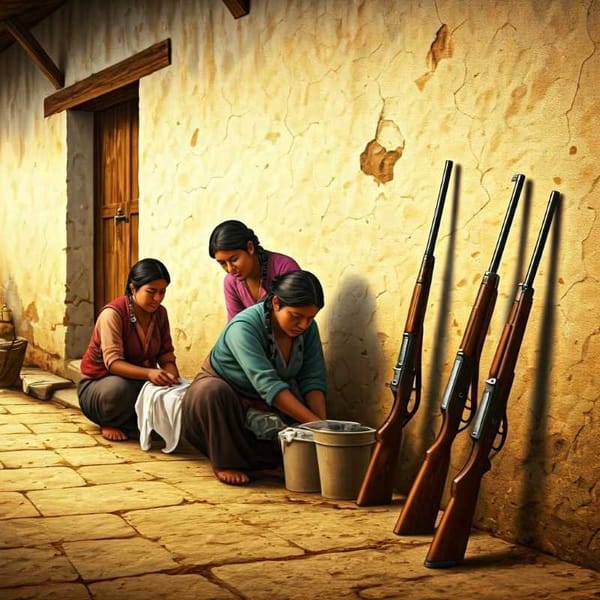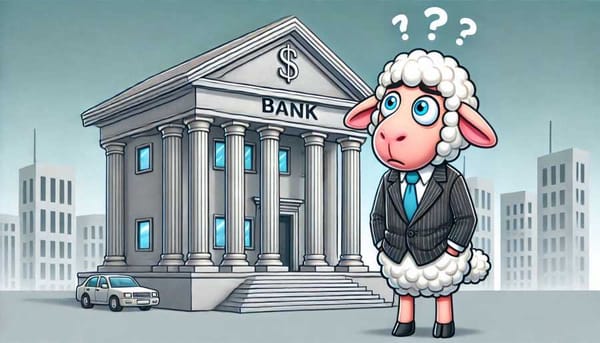What is graffiti in Mexico and how it conveys messages on various topics such as politics, the environment, or love
The term graffiti refers to the markings and inscriptions made by scratching or scribbling on a wall that conveys messages and is a form of expression.

Graffiti is not a practice that began in the twentieth century and continues in the twenty-first, but has existed in every era and has evolved depending on the needs of people and events. In the late 1960s, graffiti groups painted on and against political issues, and their graffiti was painted near universities, so spray paint became part of the graffiti movement.
Graffiti has been done for several centuries in different parts of the world, in ancient Rome, there was the custom of writing on surfaces such as walls and columns, in these places have been found inscriptions in vulgar Latin, the phrases found refer to politics, as well as others contain declarations of love and insults. The places where this graffiti have been found are the catacombs of Rome, in the ruins of Pompeii and Herculaneum (Ercolano today).
The Romans were incurable graffiti artists because they left their graffiti in different parts of Rome and even in the pyramids of Egypt. An example of this is the Roman graffiti, "Admiror, paries, te non cecidisse qui tot scriptorum taedia sustineas", which means "a lot of wonders, wall, by not falling to pieces overwhelmed by the weight of so many idle scribes".
Another example of graffiti, which shows writing on the wall, is from the year 1521, after the taking of Tenochtitlan by Hernán Cortés, a war began on walls because there were men who were unhappy about the pay. In the book Historia verdadera de la Conquista de la Nueva España ("True History of the Conquest of New Spain"), Bernal Díaz del Castillo mentions in an account that Hernán Cortés lived in Coyoacán in a palace with white walls where he could write with charcoal and other materials.
During the Second World War, in 1943 in Tunisia a graffiti was found, which had the following written on it: Kilroy was here. It became famous because it was also found in other places such as Italy, France, and Germany. In Philadelphia in 1960, two young graffiti artists named Cornbread and Kool Earl emerged and defined the role of graffiti and created the getting up style. The graffiti artist Cornbread began making tags (signatures). This graffiti artist's style was to create long letters with bases on the bottom. He gained recognition for having left his mark on several places in the city.
Within the history of contemporary graffiti, two antecedents should be mentioned. In 1968, youth-urban movements were present at an international level, because there was a need to express and communicate feelings and opinions about the power structures, so there were collective and individual iconoclastic explosions in different countries, some of them are: France, Mexico, Spain, Argentina, Uruguay, United States of America and Germany, where the use of graffiti writing became present: France, Mexico, Spain, Argentina, Uruguay, United States of America and Germany, where the use of graffiti writing was present.
In the seventies in New York, the first generation of graffiti artists emerged and the train cars of that city suffered a subway invasion of pictograms, scratching the cars had a great boom among young people because this action gave them recognition. From these events, a wave of graffiti spread to several countries in America and Europe.
Graffiti as a youth expression began in the sixties and has lasted until today in several cities around the world. Graffiti in Mexico arrived through the border with the United States of America since the migration between both countries helped the circulation of this phenomenon among young people living in the border cities, as was the case of Tijuana. Many of the American graffiti artists who visited the northern border of Mexico, left samples of their graffiti, so that "graffiti developed strongly in the U.S. city of San Diego, crossing the Mexican border through Tijuana, where the San Diego team of KOS began to scratch Tijuana walls in the early nineties, recognizing the pioneering figures of KECHA and CHONES".
After its arrival, it spread throughout the national territory, reaching Mexico City. By the 1980s, graffiti was an illegal activity, which had a presence in the Mexican capital and gave rise to graffiti artists, young people who used aerosol to spray their signature, and some bombs on different surfaces in the streets of the city. In the mid-nineties, graffiti became a fashion, so fanzines, magazines, records, movies, and comics were distributed or exchanged within the youth population, as the search for recognition to be accepted in a certain crew and thus be part of a group.
Later in this same city, activities related to graffiti arose and some government institutions officialized and monopolized this movement, considering it a social danger, a fact that did not end completely with graffiti. Since 1995, graffiti is transmitted from the center to the interior of the national territory and begins to be part of the life of children and young people attending primary and secondary schools.
In the 1990s, graffiti arrived in Morelos, and the cities that quickly adopted it were Cuernavaca, Cuautla, Jiutepec, and Temixco: Cuernavaca, Cuautla, Jiutepec, and Temixco, therefore the first graffiti artists appear with their works and styles. Similarly, there are several reasons why they enter the world of graffiti, some of them are: by imitation, to belong to a group, to live and feel strong emotions, to be recognized by other groups that are dedicated to the same thing, some other young people do graffiti to let off steam from life itself.
Many of them began by making sketches, which they would later capture in and out of school, through spray paint. Some of the graffiti artists from Morelos began at puberty and continued in later years, so they are currently students belonging to art schools or cultural centers, thus having experience and portfolio of their creations, so they are professionals in the world of arts; many other young people study high school or just work and in their free time are dedicated to making graffiti. The experience of these kids has been acquired through practice.
Some young people believe that being a graffiti artist is just a stage in their lives, others say it is an attitude or a way of life.
At the end of the 1990s, there was a graffiti boom and as a result, there was a greater production of graffiti. Young people dedicated to this activity went out at different hours of the night to paint and scratch in public places. These places had a certain degree of difficulty, some of them were and continue to be: spectacular buildings, pedestrian bridges, fences, sites located on main streets and avenues. The degree of difficulty is necessary to acquire prestige and recognition among their peers, therefore, the challenges are various, for example, learning to outwit the authorities, especially the police, since they are in charge of guarding public roads.
Therefore, young people organize themselves into crews; this allows them to interact, protect and organize themselves. These groups are located by zones, have a territory, and have an internal hierarchy, as well as interact and shape their works. Skill and speed are important skills to be able to make tags and bombs. It is common to find signatures or characters in different parts of these places, as there is a constant coexistence and interaction.
The greatest presence of graffiti is found on walls, businesses, buildings on avenues, large and busy streets, as well as on pedestrian bridges and billboards on the highway, which connects the different urban areas within the state. Some crews have disintegrated, as many of the young people who were part of them, dedicated themselves to other activities, migrated, continued their studies, and others got married, thus their needs and interests changed.
Graffiti is different in each municipality of Morelos because the creativity, tastes, and needs of each young person are different. Graffiti can be considered art and its representatives make this movement be seen as such because through the ingenuity and techniques they use in the graffiti they paint, they highlight various colors, textures, shapes, and details that make the graffiti a form of expression.
Graffiti artists are young people who like to paint in various places, where there is some difficulty either technical or location because they want to earn the respect and admiration of passers-by and graffiti writers themselves. Whether legal or illegal graffiti is present in the street or even on the wall of the house where one lives. This cultural phenomenon has been studied and seen from different fields, so it is important to listen to the different voices and opinions that have to do directly or indirectly with this activity.
This movement is part of a process of shaping personal identity and in this case, a proscribed identity, which is rejected by members of society who dominate certain groups, in this way, young people are labeled with derogatory and persecutory names, some of these groups have been and many still are: ethnic groups, religious groups, chavos banda, punks, cholos, and graffiti artists. Graffiti has not only been an activity of graffiti artists but also of cholos, chicanos, and chavos banda, since they have adopted it with the same objective, to mark, territory, and show the name of their group.
Young people group and share ideas, so their voices and experiences allow understanding the confirmation of youth imaginaries around graffiti. For young people who do legal graffiti, it is important for them to be identified and to know who they are; some young people add their e-mail address to their graffiti since they work as taggers. In this way they make themselves known among crews and individually, young people in Morelos meet and paint with friends who are part of their crew or others.
Friendship is an important aspect to form a crew because through meetings or via the internet they agree to meet and do some collective painting or help one of the members to carry it out. Becoming popular and risky is one of the characteristics of a good graffiti writer: the cool one, the chingón. Therefore, support and respect exist in this activity, because it is respect based on experience, trajectory, and knowledge since it grants roles, spaces, and status within this youth community.
Graffiti for many young people is the opportunity to express their social disenchantment; others seek their aesthetics through the use of aerosol, through this medium, children create and show their natural talent. Some writers or graffiti artists consider the illegal as an important step to be able to say that they are graffiti artists.
Graffiti is a youth activity that takes place within a given social context, where there are rules to follow, which are not written, but which mark the ways to carry it out. Thus, graffiti is a cultural, youth, and artistic movement, which has a community that transmits its actions and ways of thinking, as young people point out that whoever has not done illegal graffiti, can not say they are graffiti artists, as it is the way they are initiated in this movement, to later continue painting in clandestine or permitted spaces.
Within the clandestine graffiti, the kids know that they transgress the law and damage private property, and for that reason they are labeled as vandals or drug addicts, which is not an impediment to continue. The way graffiti is seen depends on who gives the opinion and from what perspective, since this activity is interpreted from many aspects, so it is important to take into account the opinions of graffiti artists as well as those of society in general.
By Lorena reyes Castañeda, Source: El Tlacuache (843).




